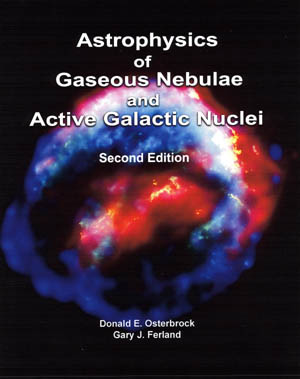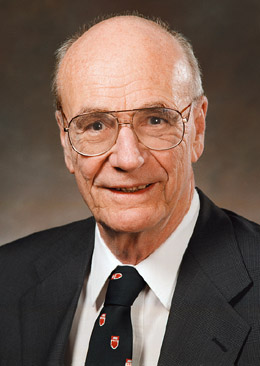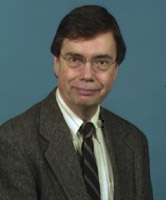
Astrophysics of Gaseous Nebulae and Active Galactic Nuclei, Second Edition
Thoroughly revised, expanded and updated throughout, this new edition of Astrophysics of Gaseous Nebulae and Active Galactic Nuclei is a graduate-level text and reference book on gaseous nebulae, nova and supernova remnants, and the emission-line regions in Seyfert galaxies, radio galaxies, quasars, and other types of active galactic nuclei.
Summary
Thoroughly revised, expanded and updated throughout, this new edition of Astrophysics of Gaseous Nebulae and Active Galactic Nuclei is a graduate-level text and reference book on gaseous nebulae, nova and supernova remnants, and the emission-line regions in Seyfert galaxies, radio galaxies, quasars, and other types of active galactic nuclei. Much of the new data and many of the new images are from the Hubble Space Telescope and some of the largest ground-based telescopes in the world. Two wholly new chapters have been added, one on infrared astronomy and the other on X-ray astronomy, reflecting the great advances in these fields. This new edition also contains two completely new appendices, one a long primer on the quantum-mechanical concepts used in the analysis of nebular emission-line spectra, and the other a briefer description of molecular spectra. Large amounts of new data on dust in nebulae and quasars, and the photo-dissociated regions containing neutral atoms, molecules, and dust within and around them, have also been added to the book. Thus, the previous edition of this classic text, which has been tried, tested, and widely used for thirty years, has now been succeeded by a new, revised, updated, larger edition, which will be valuable to anyone seriously interested in astrophysics.
Translated into Japanese.
Resources
Table of Contents
Preface xii
Preface to First Edition xvi
1 General Introduction 1
1.1 Introduction 1
1.2 Gaseous Nebulae 1
1.3 Observational Material 4
1.4 Physical Ideas 10
1.5 Diffuse Nebulae 12
1.6 Planetary Nebulae 14
1.7 Nova and Supernova Remnants 16
1.8 Active Galactic Nucl ei 17
1.9 Star Formation in Galaxies 18
References 22
2 Photoionization Equilibrium 29
2.1 Introduction 29
2.2 Photoionization and Recombination of Hydrogen 32
2.3 Photoionization of a Pure Hydrogen Nebula 35
2.4 Photoionization of a Nebula Containing Hydrogen and Helium 40
2.5 Photoionization of He+ to He++ 47
2.6 Further Iterations of the Ionization Structure 49
2.7 Photoionization of Heavy Elements 50
References 60
3 Thermal Equilibrium 79
3.1 Introduction 79
3.2 Energy Input by Photoionization 80
3.3 Energy Loss by Recombination 81
3.4 Energy Loss by Free-Free Radiation 84
3.5 Energy Loss by Collisionally Excited Line Radiation 84
3.6 Energy Loss by Collisionally Excited Line Radiation of H 90
3.7 Resulting Thermal Equilibrium 91
References 94
4 Calculation of Emitted Spectrum 118
4.1 Introduction 118
4.2 Optical Recombination Lines 120
4.3 Optical Continuum Radiation 131
4.4 Radio-Frequency Continuum and Line Radiation 136
4.5 Radiative Transfer Effects in H I 142
4.6 Radiative Transfer Effects in He I 150
4.7 The Bowen Resonance-Fluorescence Mechanisms for O III and O I 152
4.8 Collisional Excitation in He I 154
References 157
5 Comparison of Theory with Observations 192
5.1 Introduction 192
5.2 Temperature Measurements from Emission Lines 194
5.3 Temperature Determinations from Optical Continuum Measurements 200
5.4 Temperature Determinations from Radio-Continuum Measurements 203
5.5 Temperature Determinations from Radio & UV Absorption Lines 207
5.6 Electron Densities from Emission Lines 210
5.7 Electron Temperatures and Densities from Infrared Emission Lines 215
5.8 Electron Temperatures and Densities from Radio Recombination Lines 216
5.9 Filling and Covering Factors 223
5.10 Ionizing Radiation from Stars 226
5.11 Abundances of the Elements in Nebulae 235
5.12 Calculations of the Structure of Model Nebulae 245
References 250
6 Internal Dynamics of Gaseous Nebulae 283
6.1 Introduction 283
6.2 Hydrodynamic Equations of Motion 284
6.3 Free Expansion into a Vacuum 289
6.4 Shocks 291
6.5 Ionization Fronts and Expanding H+ Regions 295
6.6 Magnetic Fields 301
6.7 Stellar Winds 303
References 306
7 Interstellar Dust 316
7.1 Introduction 316
7.2 Interstellar Extinction 316
7.3 Dust within H II Regions 325
7.4 Infrared Thermal Emission 331
7.5 Formation and Destruction of Dust Particles 337
7.6 Grain Opacities 339
7.7 Effects of Grains on Surrounding Gas 341
7.8 Dynamical Effects of Dust in Nebulae 345
References 348
8 Infrared Radiation and Molecules 371
8.1 Introduction 371
8.2 The Structure of a PDR 372
8.3 The H2 Molecule 376
8.4 The CO Molecule 381
8.5 Comparison with Observations: 385
8.6 Molecules around H II Regions 389
References 392
9 H II Regions in the Galactic Context 404
9.1 Introduction 404
9.2 Distribution of H II Regions in Other Galaxies 404
9.3 Distribution of H II Regions in Our Galaxy 406
9.4 Stars in H II Regions 410
9.5 Abundances of the Elements 413
9.6 Newly Formed Stars in H II Regions 424
9.7 Starburst Galaxies 427
References 429
10 Planetary Nebulae 445
10.1 Introduction 445
10.2 Distance Determinations 445
10.3 Space Distribution and Kinematics of Planetary Nebulae 451
10.4 The Origin of Planetary Nebulae and the Evolution of Their Central Stars 453
10.5 The Expansion of Planetary Nebulae 461
10.6 Morphology and Composition 463
10.7 Planetary Nebulae with Extreme Abundances of the Elements 468
10.8 Molecules in Planetary Nebulae 470
10.9 Mass Return from Planetary Nebulae 474
10.10 Planetary Nebulae in Other Galaxies 476
References 480
11 Heavy Elements and High-Energy Effects 502
11.1 Introduction 502
11.2 Physical Processes Involving Bound Electrons 502
11.3 Physical Processes at Still Higher Energies 508
11.4 Physical Conditions from X-ray Spectroscopy 513
11.5 Collisional Excitation of H0 518
References 523
12 Nova and Supernova Remnants 537
12.1 Introduction 537
12.2 Nova Shells 537
12.3 The Crab Nebula 546
12.4 The Cygnus Loop 553
12.5 Cas A 559
12.6 Other Supernova Remnants 562
12.7 Spectroscopic Differences between Shock-Heated and Photoionized Regions 564
12.8 h Car 566
References 570
13 Active Galactic Nuclei – Diagnostics and Physics 595
13.1 Introduction 595
13.2 Historical Sketch 597
13.3 Observational Classification of AGNs 601
13.4 Densities and Temperatures in the Narrow-Line Gas 608
13.5 Photoionization 613
13.6 Broad-Line Region 621
References 628
14 Active Galactic Nuclei – Results 648
14.1 Introduction 648
14.2 Energy Source 649
14.3 Narrow-Line Region 653
14.4 LINERs 659
14.5 Broad-Line Region 663
14.6 Dust in AGNs 672
14.7 Internal Velocity Field 676
14.8 Physical Picture 685
References 707
Appendix 1 Measures of Light 725
A1.1 Specific Intensity I 725
A1.2 Flux F 726
A1.3 Mean Intensity J 727
A1.4 Energy Density and Radiation Pressure 727
A1.5 Emittance 728
A1.6 Surface Brightness S 729
A1.7 Emissivity and Observed Quantities 729
References 730
Appendix 2: Milne Relation Between Capture and Photoionization Cross Sections 733
Appendix 3 Emission Lines of Neutral Atoms 736
Appendix 4 Nebular Quantum Mechanics 740
References 767
Appendix 5 Atomic Data for Heavy Element Ionization Balance 769
References 786
Appendix 6 Quantum Mechanics of Molecules 788
References 795
Glossary of Physical Symbols 796
Glossary of Acronyms 815
Index
Reviews
“This new edition of AGN2 is impressive for the breadth of processes and objects that it covers. Full of physical insight, it remains the definitive reference for understanding every type of emission-line object. I keep a copy on my desk at all times.”
-Robert Williams, Space Telescope Science Institute
“This is a much-needed update to the classic work by Osterbrock with the same title, one of the most heavily used and cited in all of astrophysics. It states physical principles very clearly and shows their applications to many types of astronomical objects. Important developments since the previous volume, especially in infrared and X-ray astronomy, have been added.”
-John S. Mathis, University of Wisconsin-Madison


